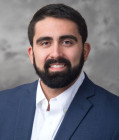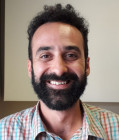How Inequality and Politics Influence Government Responses to Natural Disasters
Connect with the author
After a hurricane strikes, governments and electric utility companies go to work restoring a sense of normalcy to their communities. Typical disaster recovery efforts include providing food and shelter to the displaced and medical services to the injured, and turning the power back on. While governments and electric utility companies claim that they do not give preferential treatment to specific groups while performing these services, people on the ground have questioned whether such a claim is true in practice. Who is right? When disasters occur, do governments and utility companies place a priority on helping some while neglecting others?
The 2017 hurricane season provides ample evidence of the inequalities that mark disaster recoveries. Within one month, hurricanes Irma, Harvey, and Maria devastated communities in Texas, Florida, and Puerto Rico, making that season one of the costliest to date and one of the deadliest in U.S. history. Hurricane Maria caused a complete power outage in Puerto Rico, the largest blackout that America has ever incurred. This outage is a tragic natural experiment that provides a unique opportunity to understand prioritization during disaster recovery processes. Although a variety of factors determine the groups to which governments and utility companies are most responsive, our research shows that social vulnerability and support for the ruling party are key predictors.
Some Communities are More Vulnerable to Disasters
Everyone is vulnerable to disasters, but some are more vulnerable than others. Vulnerability refers to a community’s exposure to risk, loss, and harm; in particular, social vulnerability describes how resilient a community is, and how the attributes of a particular population will shape not just the impact of a disaster, but also dictate that population’s ability to recover from it. Socioeconomically marginalized groups exhibit marked social vulnerability: they tend to be less prepared for disasters, experience greater impact from those disasters, and—tellingly—also elicit less government responsiveness during disaster recoveries.
Our research shows that, in practice, socioeconomic conditions and partisan politics influence responses to disasters—even though governments and utility companies claim to prioritize the needs of critical infrastructure like hospitals and emergency operation centers. We employed statistical models to explain the distribution of power restoration crews after hurricane Maria in Puerto Rico in 2017, and showed that communities with greater numbers of socially vulnerable people waited longer for crews to begin working in their neighborhoods. Our research also found that power restoration crews took fewer days to reach communities that supported the ruling party than those that did not.
How Can Governments and Utility Companies Improve Disaster Recoveries?
To create a more level playing field, governments and utility companies can take steps to achieve equity in disaster response, and save lives in doing so.
- Prioritize vulnerable communities: Current disaster resource distribution practices tend to leave those in the greatest need behind. Governments and electric utility companies can reduce loss of life and suffering by officially prioritizing vulnerable communities, as they do with critical infrastructure.
- Invest in disaster preparedness in vulnerable communities: Inequality during disasters is often a reflection of existing inequalities. Governments and utilities can enhance disaster preparedness through greater investment in vulnerable communities on flood prevention, modernizing electric grids, and transitioning away from a heavy dependence on fossil fuel for energy generation.
- Monitor political disparities: Utility companies and governments tend to coordinate disaster recoveries without much oversight from the communities they are serving (since those communities without power and have a reduced capacity to communicate.) Increased monitoring of how disaster resources are distributed can bring public scrutiny to bear on disaster response, and reduce the tendency to give preferential treatment to communities that are politically supportive of the ruling party.
Preparing for and Recovering from More Frequent Extreme Weather
Climate change is expected to make extreme weather more frequent and damaging. When hurricanes strike, outages will ensue. These outages are more than just inconveniences; they tend to result in loss of life, increased hospitalizations, medical supply shortages, and disruptions of healthcare systems. Socioeconomically disadvantaged communities, and especially those people within them who rely on electricity-dependent medical equipment and procedures like ventilators and dialysis, are exposed to greater risks and tend to wait longer for restoration. Prioritizing vulnerable communities during disaster preparedness and recovery holds the potential to reduce loss of life and alleviate their burden of powerlessness.
Read more in Fernando Tormos-Aponte, Gustavo García-López, and Mary Angelica Painter, "Energy Inequality and Clientelism in the Wake of Disasters: From Colorblind to Affirmative Power Restoration." Energy Policy 158 (November 2021).


